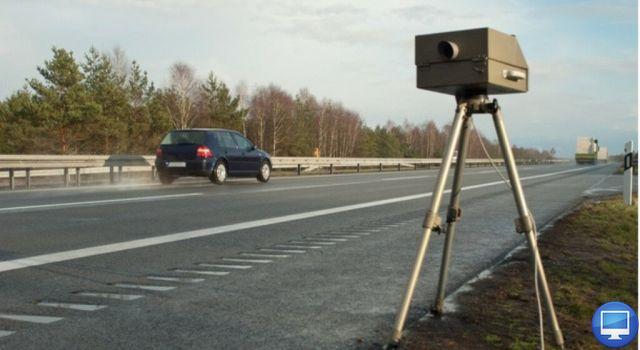
Michèle Merli, Interministerial Delegate for Road Safety, spoke last March of the wish to set up new mobile speed cameras that are less restrictive for agents and more efficient. This is now done with the testing of two models: one French, from the company Fareco, owned by the Fayat group and the other Italian, the Provida 2000 from the company Sintel Italia.
Four prototypes of these two models have been delivered to law enforcement. The departmental gendarmerie road safety squadron in Oise received a copy of each, as well as the police units of the departmental direction of public security in Yvelines. The tests started in July will run until September and can continue three months later if the results are not satisfactory. The aim of the maneuver is to make these radars operational as quickly as possible.
In both cases these models are going to be very strict with road users. They can indeed be used as a fixed speed camera but above all, they can embark in unmarked vehicles in order to verbalize on the move, taking into account the speed of the service vehicle. Another trap for the motorist, they do not use a flash and it will therefore be difficult to spot them. These new models will also be provided with tracking of mobile radar detectors and will not be subject to interference from their transmitters.
Radar behind license plate
The first system, from Fareco, is made up of 3 components: a radar concealed behind the front license plate and operating through it, inside the passenger compartment a camera housed in the bottom of the windscreen and finally a control terminal. The system is effective within a radius of 40 meters around the law enforcement vehicle in both directions of traffic
However, this radar remains relatively tolerant with a greater margin of error than on a fixed radar. According to the Parisian, the user will therefore have to drive at 124 km/h for a retained speed of 111 km/h. On board, the operator can send the ticket directly to the Rennes Processing Center without stopping the motorist. He will receive his ticket at his home in the same way as a fixed speed camera. A way to simplify the steps of the police who will no longer stop to draw up a report and will therefore be more efficient.
Range of 100 meters, adaptable on a motorcycle
The second radar, the Provida 2000 from Sintel Italia is also made up of 3 parts. A camera located at the top of the windshield recording up to 5 images per second. This is connected to a screen placed in the passenger compartment but also to a printing system located in the trunk. Sintel Italia ensures that this model is easy to access for the user but that it is also available to equip a motorcycle, a wish mentioned by Michèle Mérli. The Provida 2000 has also been approved by the Italian Ministry of Public Works and remains compliant with European CE standards.
Provided 2000
However, this system remains much less tolerant than the first since its margin of error is comparable to that of a fixed radar, ie 5%. That is to say that a measurement at 117 km / h will be reduced to 110. It detects offenses up to 100 meters and can easily be moved from one vehicle to another given its compactness, unlike the first model.
These two devices, currently in the test phases, will not be used to draw up lawsuits until the project is validated. It will then be up to Interior Minister Claude Guéant to take a decision on the adoption of these future radars planned for 2012.
- Driving assistance: the best alternatives to Waze


























